Are you planning a trip to Reykjavik in winter time? Here’s our full guide to the best things to do and see while in the capital city of Iceland!
When flying into Reykjavik in winter, you’ll land in a true winter wonderland.
With an alluring mix of urban and natural wonders, Reykjavik is brimming with Icelandic culture, fascinating museums and breathtaking landscapes.
Reykjavik is the capital of and largest city in Iceland and is known as one of the cleanest and greenest cities in Europe.
The city is a popular winter destination due to the breathtaking natural landscape that it sits in the midst of, unique winter festivals, vibrant culture and stunning Northern Lights (Aurora Borealis).
From cozy cafes to incredible outdoor adventures, there’s something for everyone here!
I recently visited Reykjavik right in the middle of winter (I landed on January 14th…) and, while it was a very cold break, there was so much I loved about it.
Sunrises and sunsets that turn the sky orange and pink for hours. Bright winter sunshine dancing off snow. -10°C mornings warmed up with a dip in the thermal springs.
Northern Lights illuminating the dark nights. Bright houses lining the city streets. Walking around in the dark at 9:30 am, hot coffee in hand, watching the city slowly come to life.
Reykjavik in winter is magical.
So, what do you need to know before planning a trip to Reykjavik in the winter? Here’s my full guide.
What’s Reykjavik like in winter?

Despite it often seeing subzero temperatures and minimal hours of daylight, Reykjavik is a unique place to visit in winter.
Admire sunrises and sunsets that seem to stretch on for most of the daylight hours, wrap up warm and enjoy the gorgeous golden hour sun bouncing off the snow, try hearty Icelandic specialties in the atmospheric cafes and restaurants and warm up in the thermal waters of Laugardalslaug or other thermal baths.
It’s certainly different to seeing the midnight sun of the summer season, but this frozen country has a particular charm in the coldest, darkest part of the year.
What’s the weather like during winter in Reykjavik?

The weather in Reykjavik in winter is generally cold, with frequent snow and, when it’s not freezing, rain. The weather is usually quite changeable; you might have freezing but brisk, clear, cold days or you could have drizzly weather wither temperatures just over zero.
How cold does Reykjavik get in winter?
Usually, the average winter temperature is freezing (or just below), but when I was in Reykjavik in January it got down to -20C (-4F) at some points; this was unusually cold, and due to the jet stream it’s usually a bit warmer.
Things to do in Reykjavik in winter
The best things to do in Reykjavik in winter include visiting the fascinating museums, shopping in vintage stores and browsing cafes, taking in a view from Hallgrimskirkja, doing day trips to see Iceland’s nature and taking frosty walks along the coastline, especially during sunrise.
Climb to the top of the Hallgrimskirkja

The Hallgrimskirkja, a Lutheran church in the city center, is one of the most famous Reykjavik landmarks.
Built between 1945 and 1986, the church sits at the top of Skólavörðuhæð hill, soaring 74.5 metres (245 feet) into the air.
The uniquely-designed church, designed by Guðjón Samúelsson, sweeps from its apex down toward the ground on both sides.
It’s supposed to represent the elements of Iceland, like rugged mountains and dramatic lava formations, but is also supposed to represent Thor’s hammer.
Inside, it’s quite basic (although you can enter for free!), but do be sure to turn around and see the organ with over 5,000 pipes.
However, any visitors to the church should ascend to the viewing platform at the top. This costs around 1,200 Icelandic Krona, or about $8.50 USD.

Once you’ve bought your ticket, you can ascend in the lift until you’re near at the top, and then it’s a couple of flights of stairs (they’re easy to climb up and have a handrail) before you’ll come out to the top where there’s a viewing platform.
The platform is walled in; there are a few windows that you can take in the view from; some windows have steps that you can climb up to and take in the epic views of the city centre sprawling beneath you.
Take in views from all angles, looking out over the harbour and further into the Icelandic countryside.
I visited not long after 10:00 am when the viewing platform opened. The queue for the list wasn’t too big, and we could take in lovely views as the city woke up while the sun rose.
Take a virtual flight at FlyOver Iceland

One of the very best things to do in Reykjavik in winter, which will help you see the best Iceland highlights without even leaving the city, is FlyOver Iceland.
This is basically a 10 minute Iceland tour where you literally fly over some of the best geological features of the country.
This immersive flight transcends seasons, where you can go into the intricate parts of South and West Iceland, virtually visiting some places that are completely inaccessible throughout the year.
In fact, Flyover Iceland makes places viewable that even Icelanders can’t see. I heard that some local people have gone in to see the flyover experience and have come out crying because they didn’t know that their country was so beautiful!
It also includes a virtual experience that’s a look into a traditional Icelandic cabin and an immersive look into the country’s folklore. Plus, there’s a cafe serving great coffee on-site.
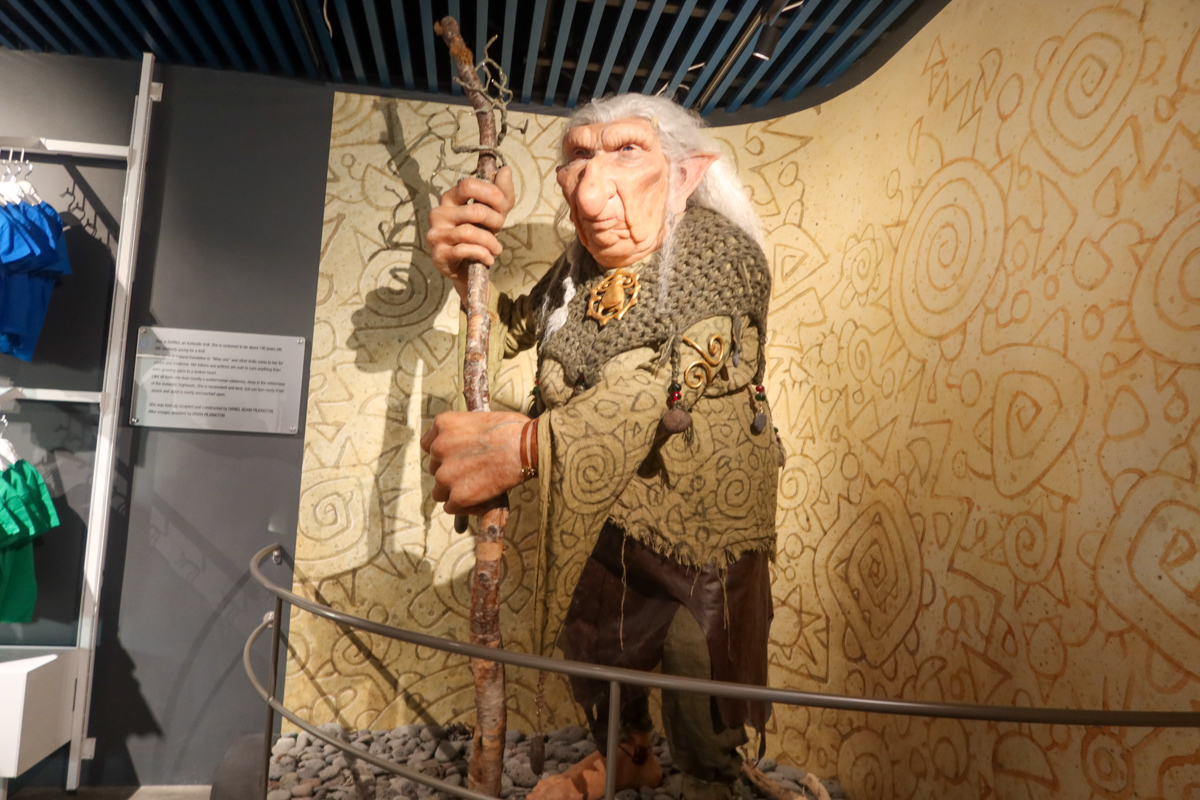
Entry isn’t guaranteed if you wait to buy your tickets on the door, and it’s a bit of a walk out of the main attractions of Reykjavik, so I’d recommend pre-booking them on Get Your Guide before visiting.
Walk down Rainbow Street
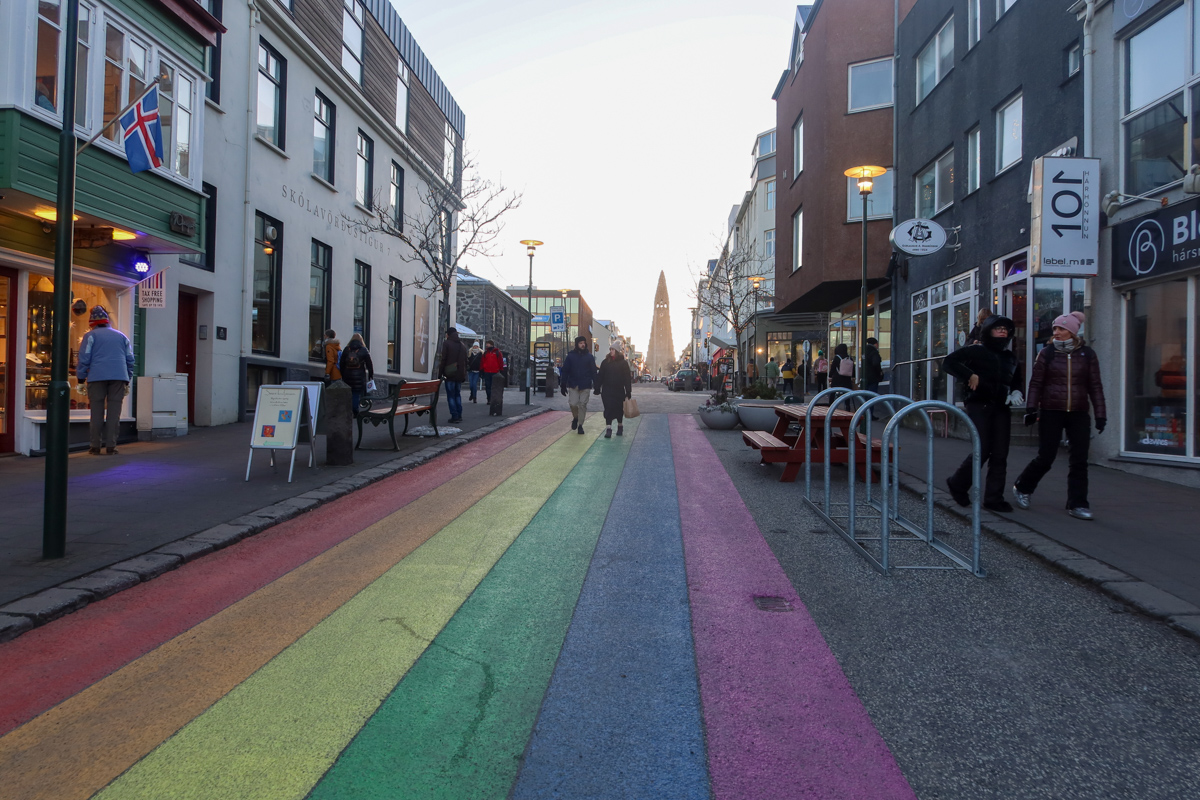
Leading up to Hallgrimskirkja, Rainbow Street is otherwise called Skólavörðustígur Street and known so because it quite literally is painted in all of the colours of the rainbow.
Lined with independent shops and cafes, this street was painted in 2015 as a sign of support to the city’s LGBTQIA+ community. It celebrates the pride festival which started in 1999.
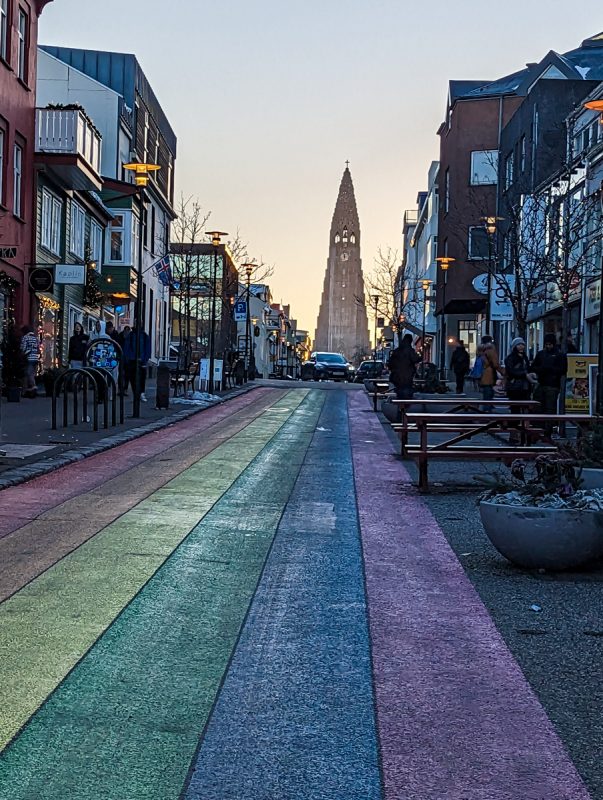
There’s a similar rainbow road in Seyðisfjörður in East Iceland. This was created because a local couldn’t go to Reykjavik pride, so he painted the road in rainbow hues instead and started his own mini-pride parade!
Back in Reykjavik, Rainbow Street is one of the most iconic spots in the city center and is definitely worth a stopover before or after visiting the Hallgrimskirkja.
Catch sunrise at the Statues and Sculptures walk

The Statues and Sculptures Walk runs along Reykjavik Harbour, from the Harpan Concert Hall for around 2.5 kilometers.
Enjoy epic views over Faxaflói Bay and Mount Esja as you walk along and see the landscape.
This walk is quite well-maintained, but in colder weather be careful of ice and snow (and don’t forget to pack many warm layers!).
The best time to visit this part of the city is during sunrise – which, in Iceland in winter, is at about 10:00 am. Seeing the sky turn pink, oranges and yellows as it ascends over the mountains is breathtaking.
Sun Voyager Statue
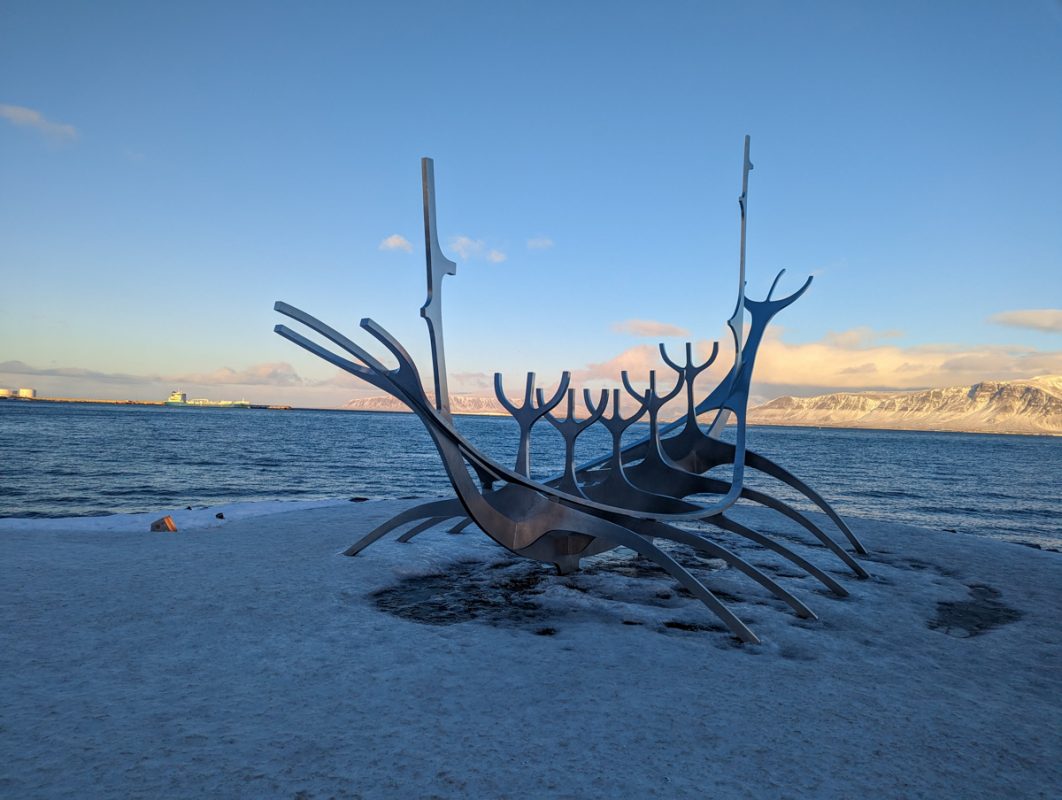
The most famous statue on this walk is the Sun Voyager, which many people think is a Viking ship and a homage to the country’s Viking heritage.
However, it’s actually an odyssey to the sun, a beautiful representation of how the sun always returns after the winter months.
That being said, if you catch it during the early golden hour of the morning, it’s beautiful in the winter months too!
Do a free walking tour of the city centre

One of my favorite activities allow over the world is free walking tours. You can do one Reykjavik – and it’s even operational in the winter, with many of the stops being indoors, away from the harsh cold.
As you explore the city, you’ll learn about the origins of Iceland and Reykjavik, including its ancient folklore and how it grew from a small Viking settlement to a prosperous capital.
Your experienced guide will also detail some of their top recommendations for things to do and places to eat and drink in the capital.
The tour is free, but it’s recommended to tip at the end. Click here to read more about it.
Do a city sightseeing bus tour of Reykjavik
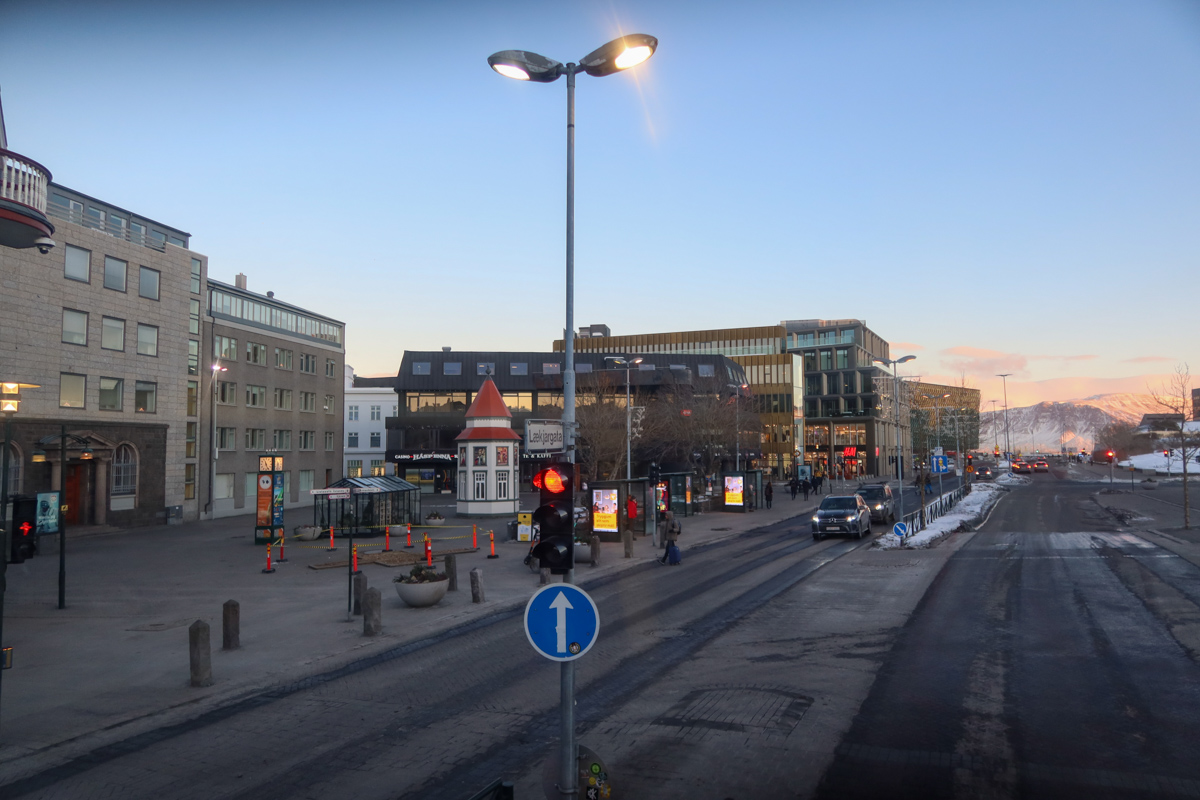
City Sightseeing is a tour bus company that operates in cities throughout the world.
We took this sightseeing bus tour of Reykjavik when we were there in January, and while it was a good way to see some of the city sights, there were some big issues with it.
The commentary was a bit wonky, with the same segments being repeated again and again.
I also saw a lot of reviews complaining about it being late, but we didn’t have an issue with this.
I’d only recommend it if you want to go around once to check out the city and get your bearings, but it’s certainly not as efficient as the buses in other parts of the world.
You can read more about it by clicking here.
Take a tour of the Harpa Concert Hall
The Harpa Concert Hall is a homage to Icelandic music and live entertainment. Icelanders have always loved entertainment, especially in the winter months.
Famous bands from Iceland include Sigur Ros and Of Monsters and Men.
You can do 30-minute tours of the concert hall where you’ll learn all about how Iceland’s unique landscape inspired its music and live performances, and see areas that aren’t usually open to the public.
Read more about Harpa Concert Hall tours by clicking here.
Visit Reykjavik’s best museums

One of the best things to do in Reykjavik in winter is to walk around its incredible museums; which is one of the best things to do in all weather conditions. Here are some of the best museums in the capital city:
- National Museum of Iceland: If you want a general history of Iceland, this should be your first stop. It’ll detail all the intricacies of this unique country’s history, including when it was first settled, how people adapted to life in the harsh climate and the Cod Wars between the country and the UK.
- Reykjavik Maritime Museum: This museum focuses on how life in the Icelandic capital revolves around the sea.
- Saga Museum: This museum centers around the Vikings in Iceland, telling them the story of the ancient settlers through their Sagas. These Sagas focus on the connection that the ancient people had with the dramatic landscapes of Iceland.
- Whales of Iceland: The largest whale museum in Europe, this exhibition focuses on all of the creatures that you can find in Reykjavik’s waters, including life-size models and interactive exhibits.
Explore Perlan
Perlan is a fantastic exhibition where you’ll learn all about Iceland’s incredible natural scenery in an immersive way.
If you have really bad weather while you’re in Reykjavik in winter, you’ll still witness the phenomena here!
Walk through the world’s first man-made ice cave, see the northern lights in the Arora exhibition, gaze at the virtual fish tank where you’ll see what’s in the waters around Iceland and catch a six-minute display at the Geldingadalir lava exhibition.
You can book your Perlan Wonders of Iceland entrance ticket online on Get Your Guide.
Visit Laugardalslaug
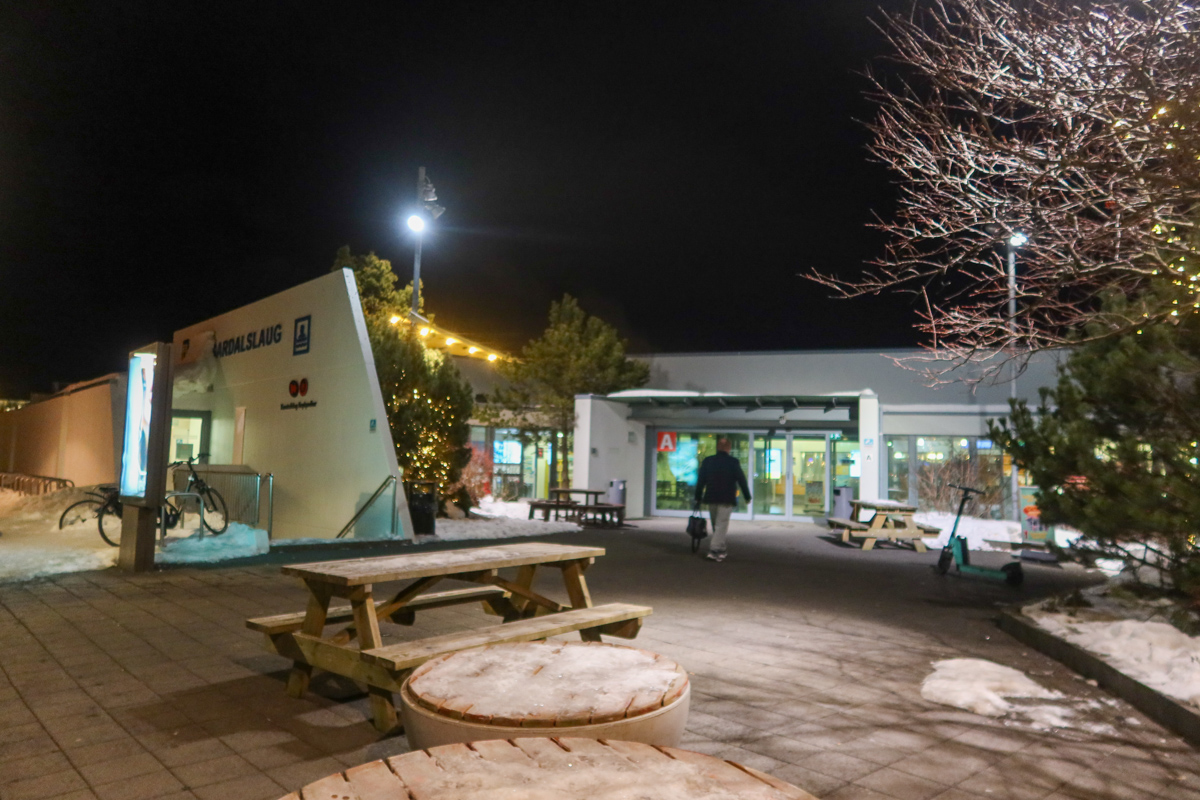
Laugardalslaug is a wonderful local gem in the heart of Reykjavik; if you’re looking for winter activities that’ll warm you up, this is a must-do.
It’s a large leisure complex close to the city; it’s around a half-hour walk from the Harpa Concert Hall.
There’s a huge swimming pool onsite, which generally sits around 28C or 82F. It’s popular with locals for a swim, even in the winter months.
I came here for a chilly outdoor swim at 6:30 am one morning when we were in Reykjavik in the winter, and I soon warmed up once I took a dip and did a few lengths!

If this is too cold, there are hot tubs all along the side of Laugardalslaug. There’s also a kid’s area that’s open in the daytime!
It’s generally a very local experience – when I was there I didn’t see any other tourists – so it feels much more authentic than both the Blue Lagoon and Sky Lagoon.
Take in the frozen Tjörnin Lake
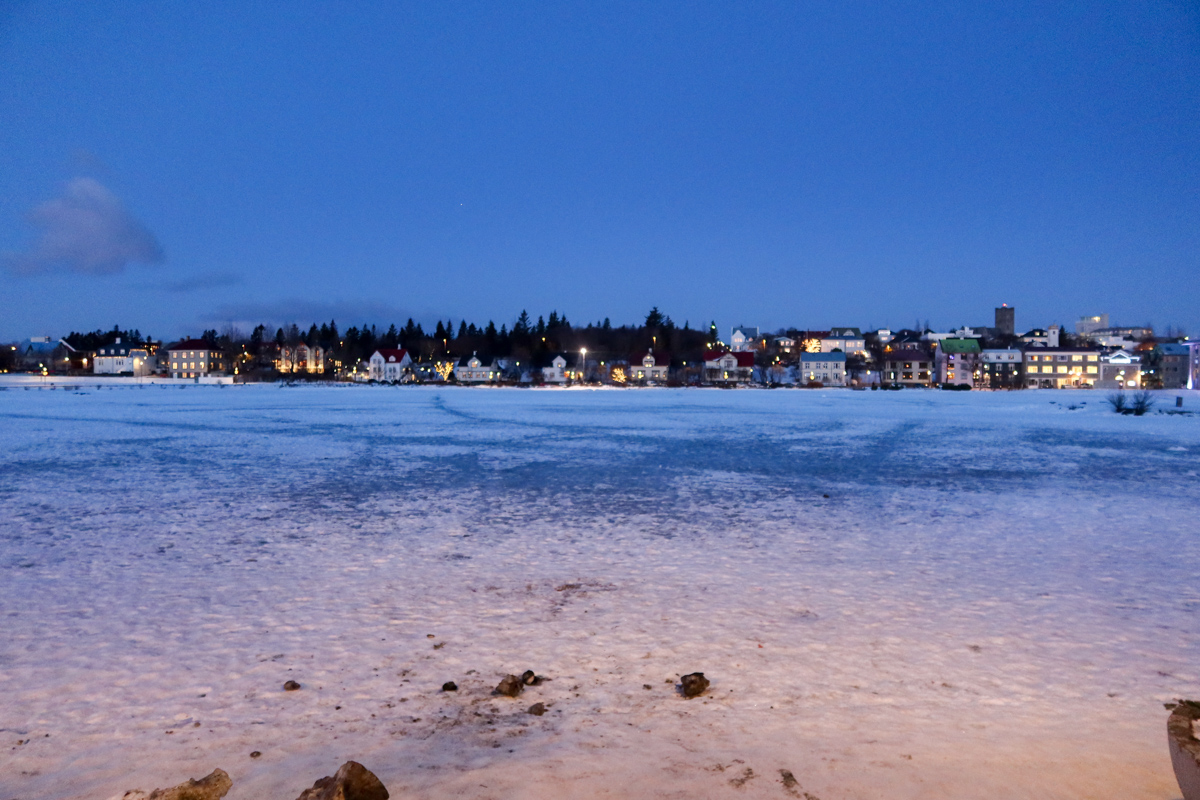
Sitting in the heart of Reykjavik City center, Tjörnin Lake (meaning “the pond” in Icelandic) is a network of lakes that runs throughout the city center. In the summer you’ll find marshland here, but it freezes over in the winter.
It’s a peaceful slice of nature in the middle of the city, perfect for a stroll, and it’s close to attractions like the City Hall.
See the 3D map of Reykjavik at the city hall
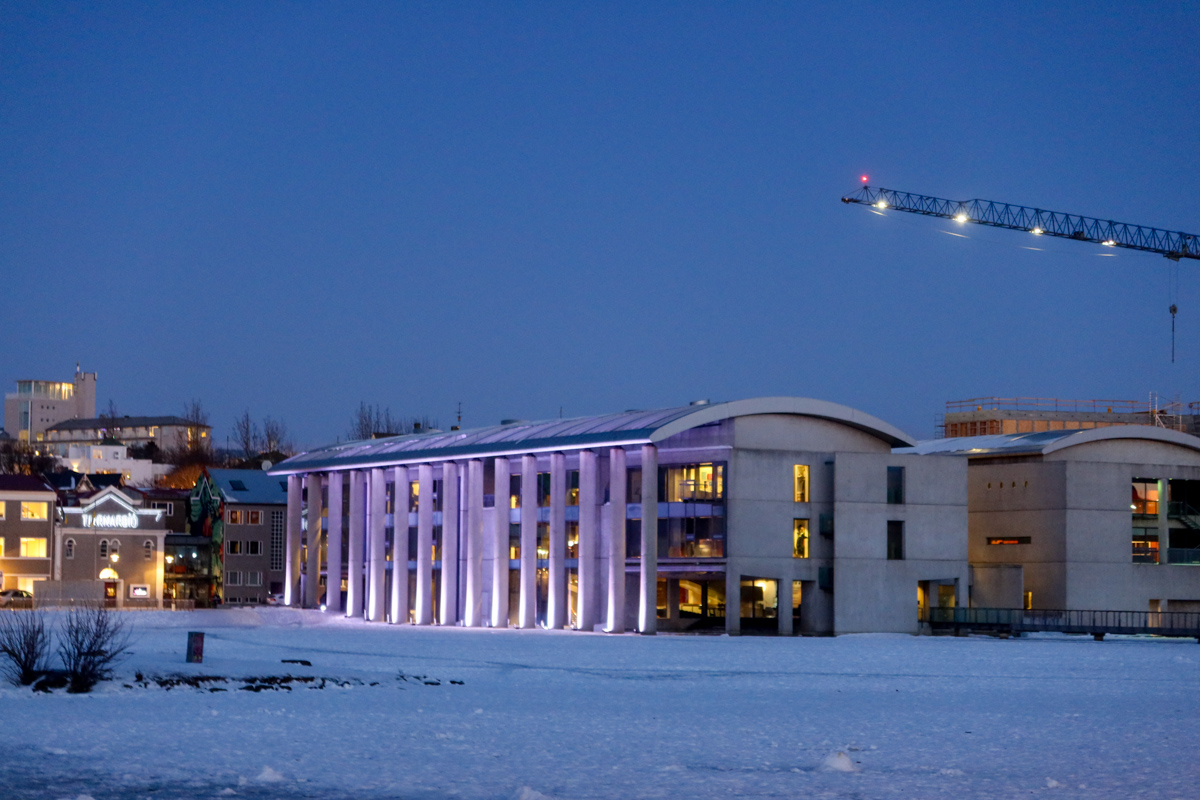
One of the highlights of Reykjavik city center is visiting the city hall and checking out the 3D map of the country.
City Hall is located on the north side of Tjörnin Lake and was created in 1988 to resemble Icelandic nature, while representing the urban environment of the city.
Walk into the ground floor where you can see the map, and span over the country, seeing the highlands and other natural features, including the gap between the two continental plates.
Check out the city’s street art
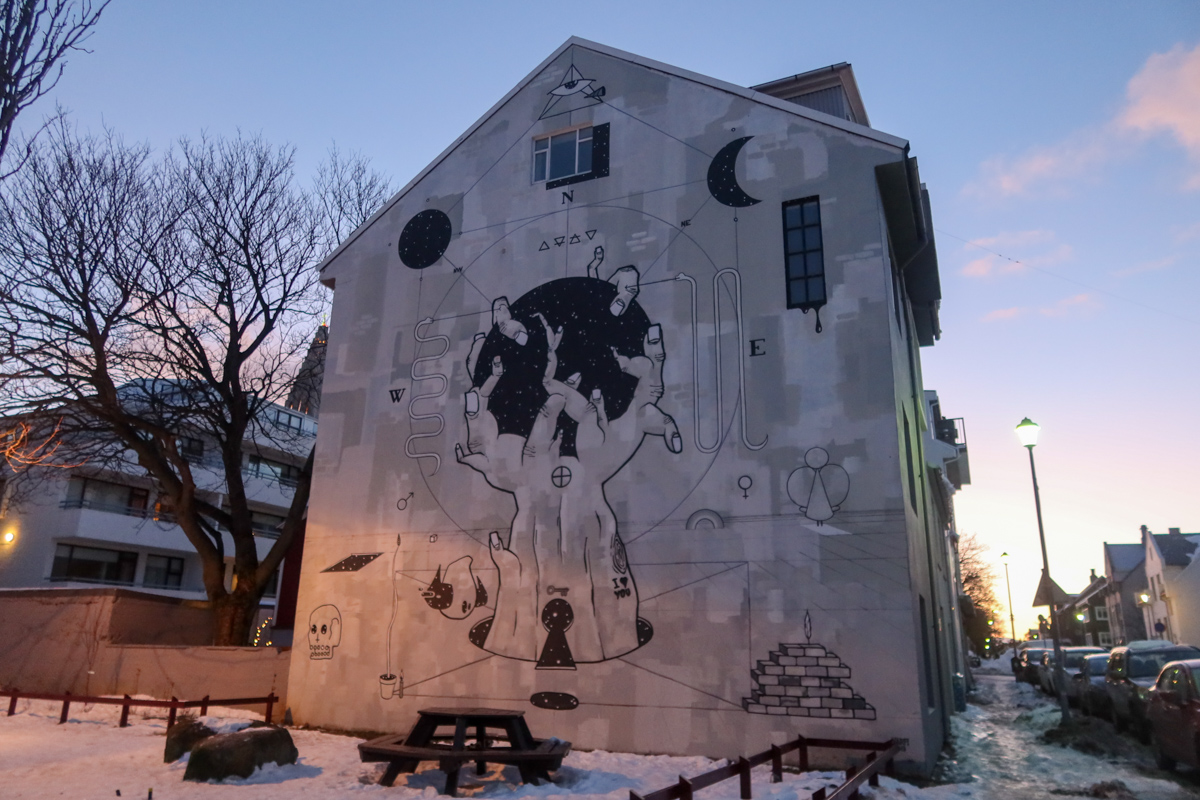
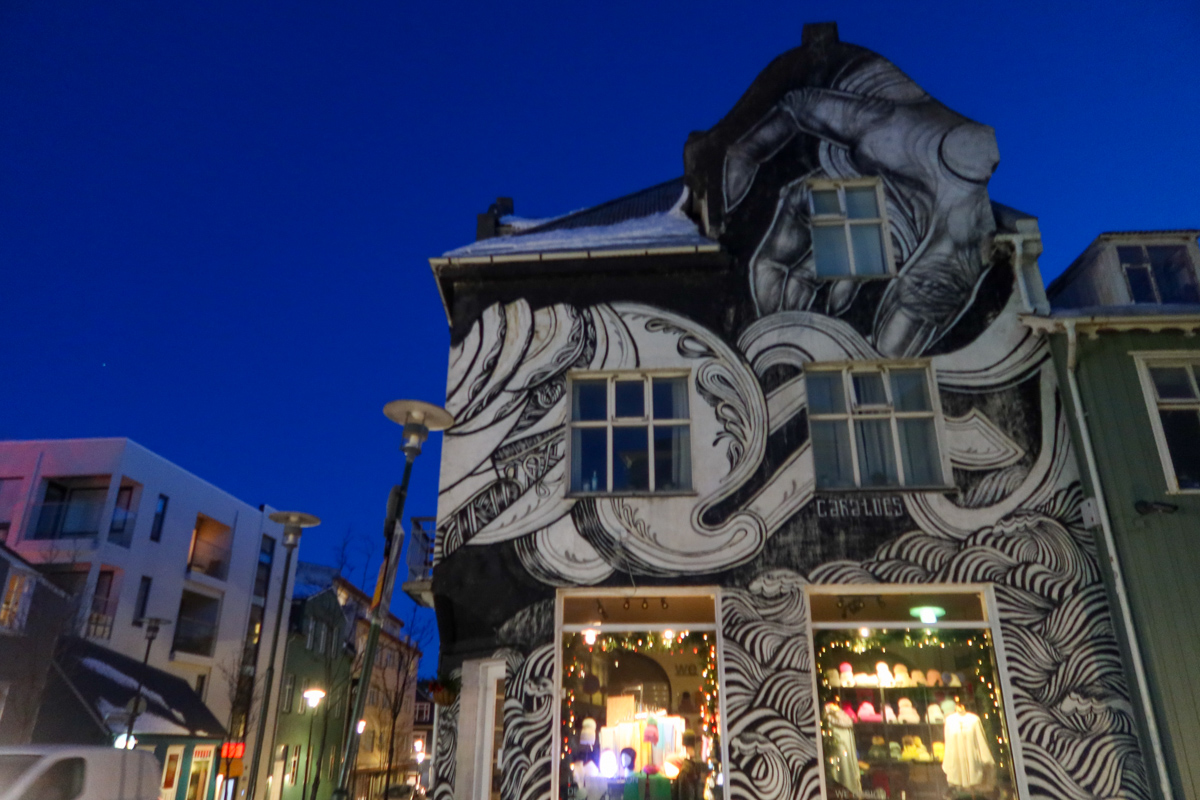
Largely because of Iceland’s natural beauty, it’s become somewhat of a haven for artists in recent years. There are plenty of artworks inspired by Icelandic nature, but recently artists have taken to the streets of Reykjavik to show off their talents.
Taking a frosty walk around the city centre to see the intricate street art is definitely one of the best things to do in winter; even if you check it out before it’s fully light.
I personally loved walking around with a hot cup of coffee in hand, watching the city slowly come to life as I gazed at the gorgeous murals.
Whale Watching Tours
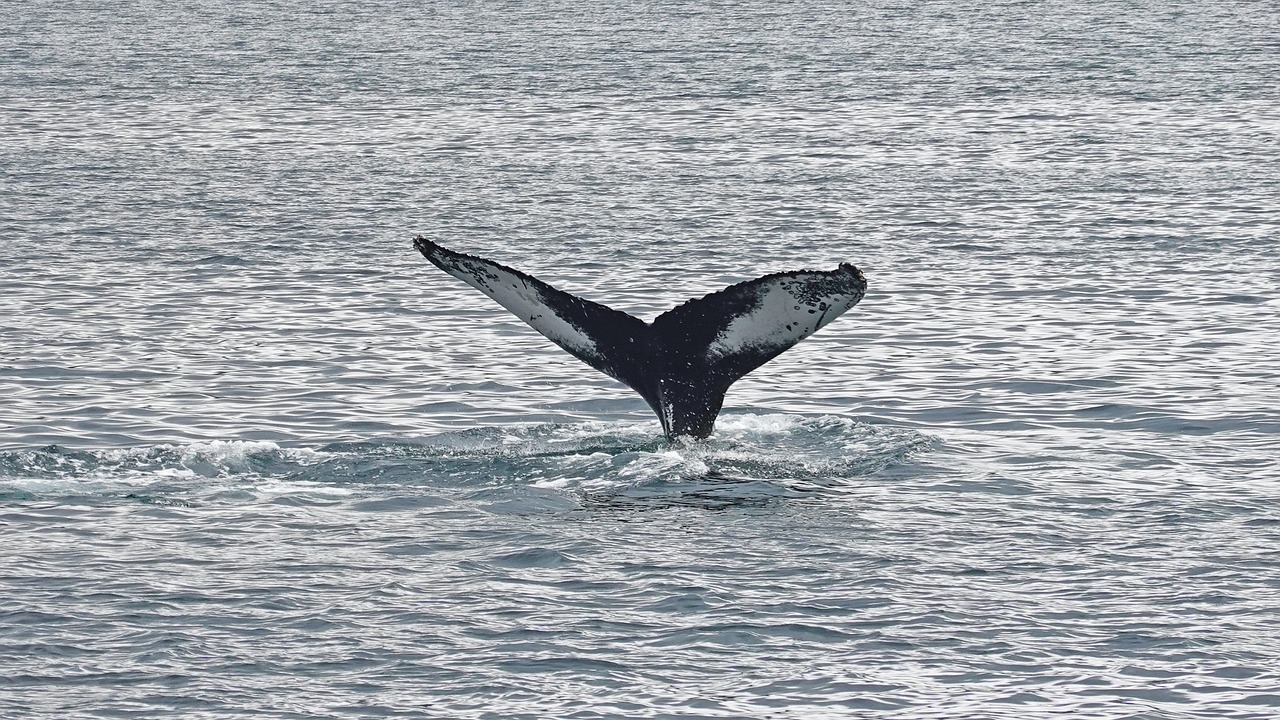
While winter isn’t the prime season for whale-watching tours, they are often lurking in the waters around Reykjavik, and you can easily book onto a tour while you’re in town.
Experienced guides and marine biologists will take you out from Reykjavik harbour into the sea, where you might see creatures like white-beaked dolphins, minke whales, humpback whales, porpoises and even orcas!
You can read more about whale-watching tours in Reykjavik, check rates and book by clicking here.
Take a trip from Reykjavik to see the northern lights
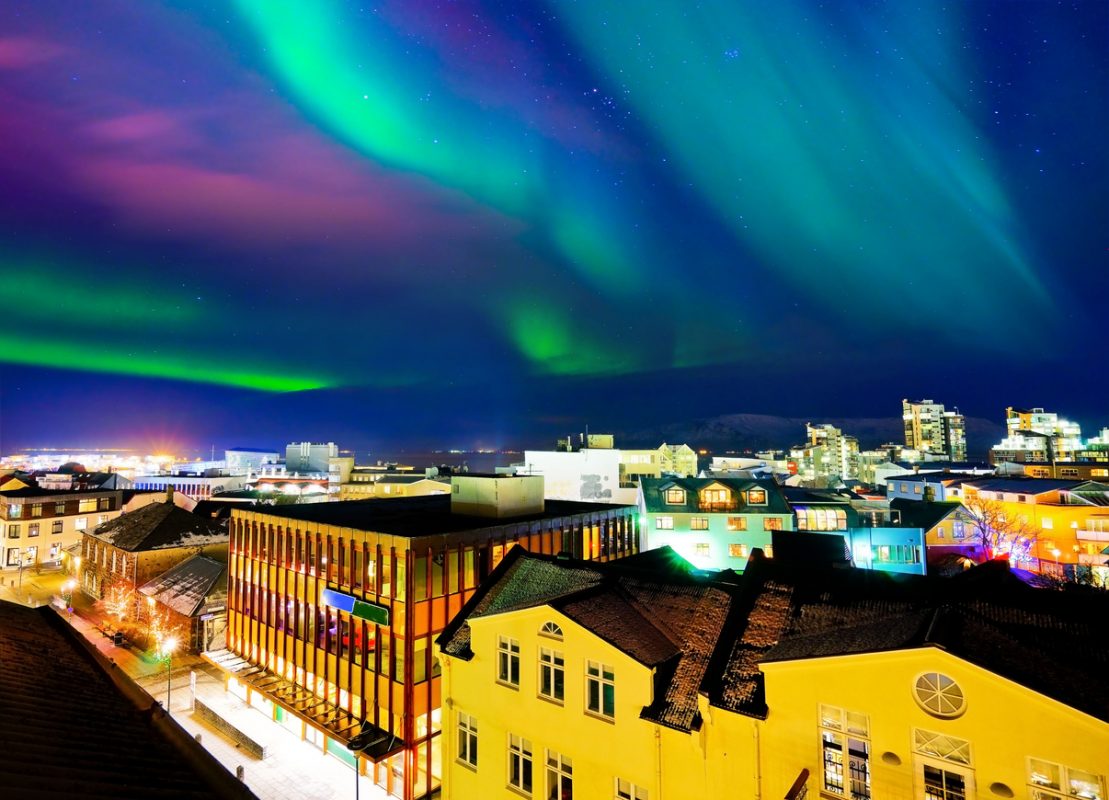
Of course, one of the best things to do in Iceland in winter is to chase the northern lights!
Due to light pollution, it’s not usually possible to see these lights in the city center, but there are frequent tours, both by land and boat, where you have a much higher chance of seeing them.
We did this boat tour that leaves from Reykjavik harbour and sails away from the city, where the flashes of green on the horizon slowly became brighter and brighter, and ultimately covered half the sky with dashes of pink.
It was a breathtaking display of lights; we were very lucky to see them in such detail, but it’s definitely worth adding to your Reykjavik winter bucket list!
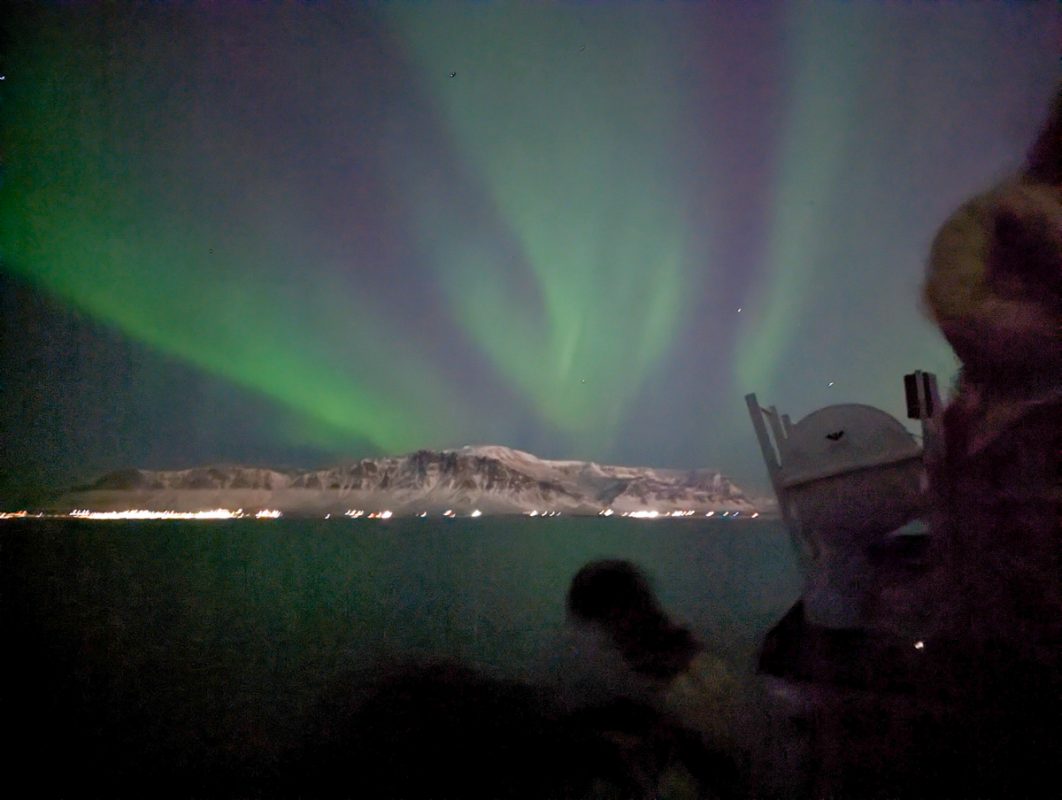
You can also do a coach tour, which travels to a few different destinations depending on the weather forecast for the particular day.
So you could end up in Thingvellir National Park or somewhere in East Iceland hunting the lights down!
Click here to read about coach tours from Reykjavik.
Of course, there’s also the chance to see the lights independently. Winter conditions can mean that the roads are icy, and you will be driving at night, so do be aware of the roads and only drive if you feel safe to do so.
If you’re in any doubt, it’s best to see the lights on a tour.
Read my full blog post about seeing the northern lights in Iceland in January by clicking here.
Day trip around the Golden Circle

The Golden Circle in winter may be snowy, but it’s still well worth visiting!
This popular day trip from Reykjavik (even in winter) is famous for showcasing all of the best sights of Iceland in one small area. You’ll see frozen waterfalls, geysirs and continental plates in just one day trip!
On a road trip around the circle or a tour of all the main sites, you’ll see the iconic Kerid Crater (not quite as mesmerising as when it isn’t snow-covered, but still worth visiting!), the frozen Gullfoss Waterfall, the erupting Great Geysir and the beautiful Thingvellir National Park.
Click here to see the tour that we did.
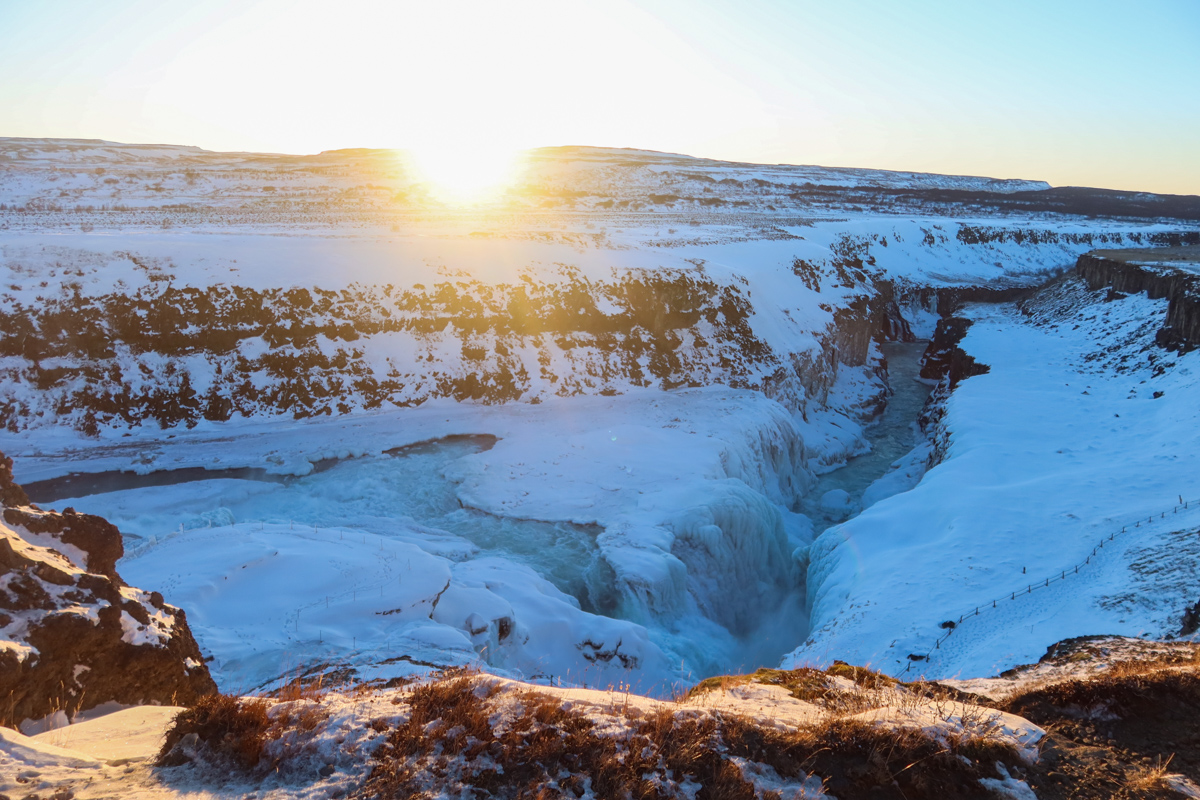
This is the only place in the world where you can walk through two continental plates. It’s also where the first Viking parliament was ever held!
It’s possible to road trip the Golden Circle independently, but if it’s particularly cold and snowy it’s safer to go with an expert guide and driver who will be able to navigate the roads well.
You can read my full guide to visiting the Golden Circle in winter here.
Visit the Blue Lagoon or the Sky Lagoon
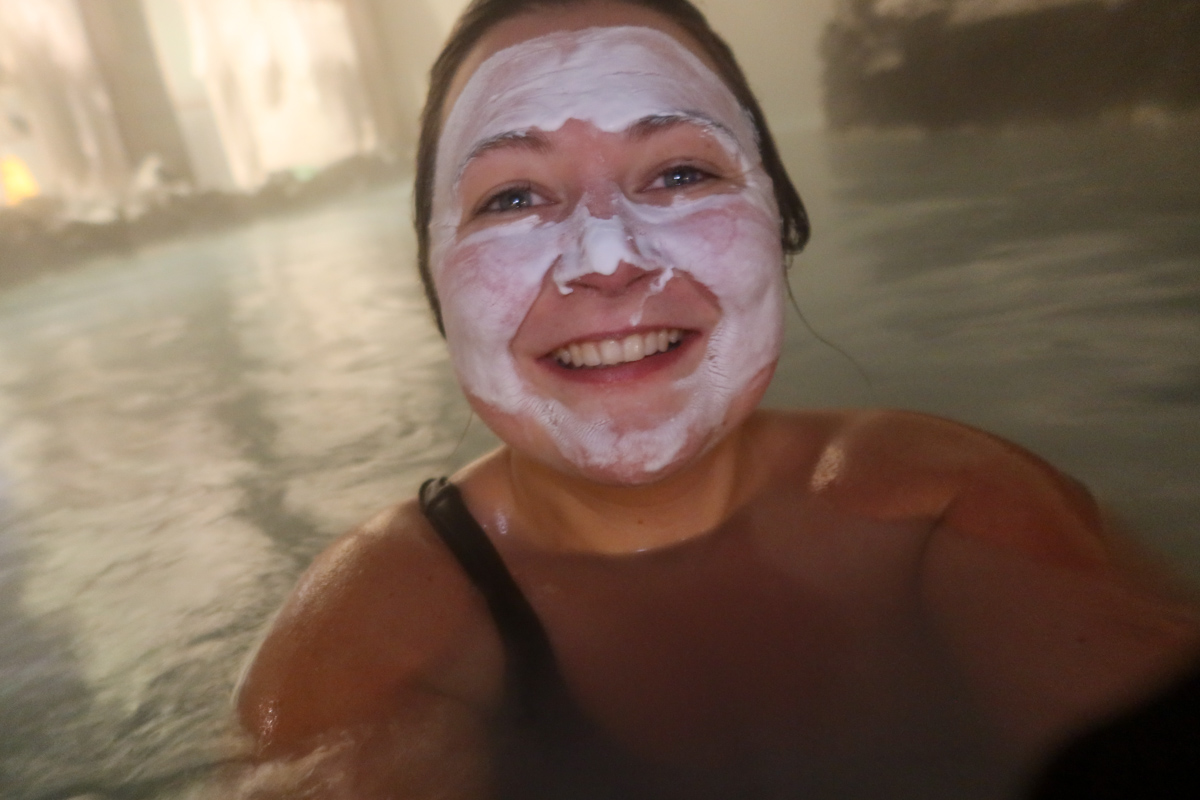
The Blue Lagoon is nearly an hour’s drive from Reykjavik, but it’s usually put on a list of things to do in Reykjavik in the winter due to the fact this it’s one of the most famous spots in Iceland.
It’s a mix between fresh and saltwater, sitting by the coast, and the element silica reflects the light of the sky, causing the blue hue.
Usually around 38°C/ 100°F, the warm waters of the lagoon are instantly relaxing. You can enjoy drinks at the swim-up bar, relax with a face mask and take in the breathtaking coastal scenery.
I’d recommend visiting for sunset because then you’ll see the bright blue water in the daytime and also experience the surreality of the Blue Lagoon at night – it feels like you’re swimming to the edge of the world!

You can either visit it independently or as part of a tour which includes transport.
Take a look at the tour that we used by clicking here.
You can also take a look at my post on visiting the Blue Lagoon in winter here.
The Sky Lagoon is much closer to the city center, just 15 minutes away. Like with the Blue Lagoon, you can also take a tour here or drive there independently.
Tours are cheaper, and it’s quicker to visit, but it’s not quite as iconic as the Blue Lagoon.
Check availability for a Sky Lagoon tour by clicking here.
Enjoy other winter tours from Reykjavik
From ice cave tours to glacier hiking, there are many other tours from Reykjavik that you can add to your winter itinerary!
To make things easy, all of these tours are bookable on Get Your Guide – and you can click on the name of the tour to see their listing. Here are some of the best:
- South Iceland Tour: This trip takes in some of the best black sand beaches and epic waterfalls that the country is famous for.
- Snorkeling in Silfra: This is a unique trip; it’s the only place in the world where you can snorkel between two tectonic plates – and you can do it in winter as well as in summer!
- Snæfellsnes Peninsula: Known as “Iceland in miniature”, this peninsula has mountains, beaches, fjords and a plethora of other natural phenomenon.

Ice Skating at Ingolfstorg Square
Grab your ice skates and take them to Ingolfstorg Square during the Christmas season!
This ice skating rink runs from late November to the start of January annually, where you can soar around the rink and enjoy the glittering lights above.
Check out the best winter festivals in Reykjavik

Dark Music Days Festival
Dark Music Days is held at the Harpa Concert Hall between January and February.
It focuses on contemporary art music by Icelandic composers and award-winning international artists.
If you visit the city during the festival, you’ll have a chance to enjoy concerts with different styles such as electroacoustic compositions with chamber instruments to film scores backed by an orchestra.
Reykjavik winter lights festival
The Reykjavik Winter Lights Festival is one of the most popular events in Reykjavik in winter.
Taking place at the beginning of February, it features music, art, and cultural performances that light up the dark Icelandic winter evenings.
The winter lights are mesmerising and make the whole city twinkle.
The festival starts with a bright opening ceremony and ends with an even brighter closing ceremony – complete with fireworks!
Thorrablot
Thorrablot is an important part of Iceland’s cultural heritage; it’s an annual Icelandic festival that celebrates the coming of spring and end of winter.
The comes from the Norse God of Thunder, Thorr.
Every year, an altar of homage is set up in honor of the god with traditional offerings on it including dried fish, smoked lamb, skyr (a type of yogurt) and brennivín (strong alcoholic beverage).
Traditionally, families and friends gather together at this time to celebrate the coming up season and exchange tales over food.
Where to stay in Reykjavik in winter
Reykjavik Lights Hotel
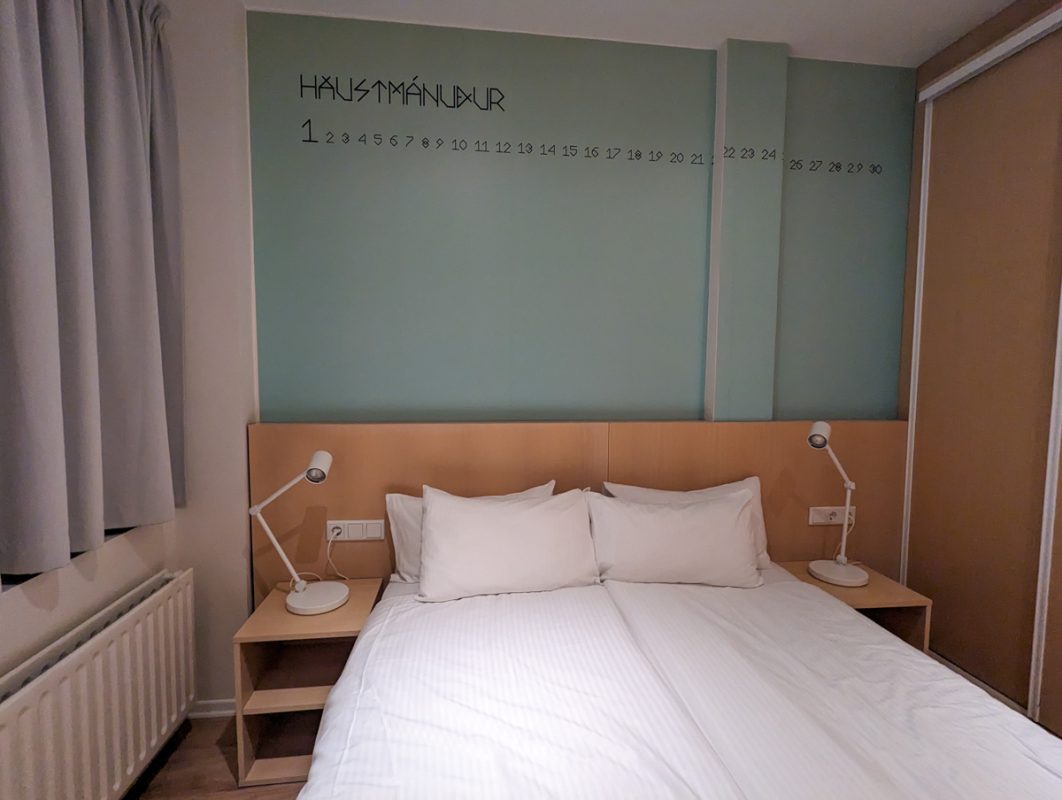
We stayed in Reykjavik Lights by Kea Hotels.
This is a chic, Scandi-vibes hotel with well-decorated yet minimalist rooms. With TVs mounted on the wall, warm radiators and views over the snow-covered mountains, you’ll love staying here in the winter.
The included breakfast is delicious, with muesli, bananas, incredible melt-in-your-mouth pastries, fruit, crusty bread and cheese, along with coffee and juice.
There was always plenty to go around and it kept being refilled!
There’s a bar and places to buy snacks in reception, and the staff were always really friendly and helpful.
There were only two drawbacks to this hotel: the location and the beds. I personally found the beds to be a bit too hard for my liking; however, I usually have very soft beds so other people may not have the same problem!
It was a bit of a walk to get to Reykjavik city center (about half an hour to the Hallgrimskirkja), bu there are regular buses that link the bus stops outside the hotel to the city center.
More about them in the “how to get around Iceland” section!
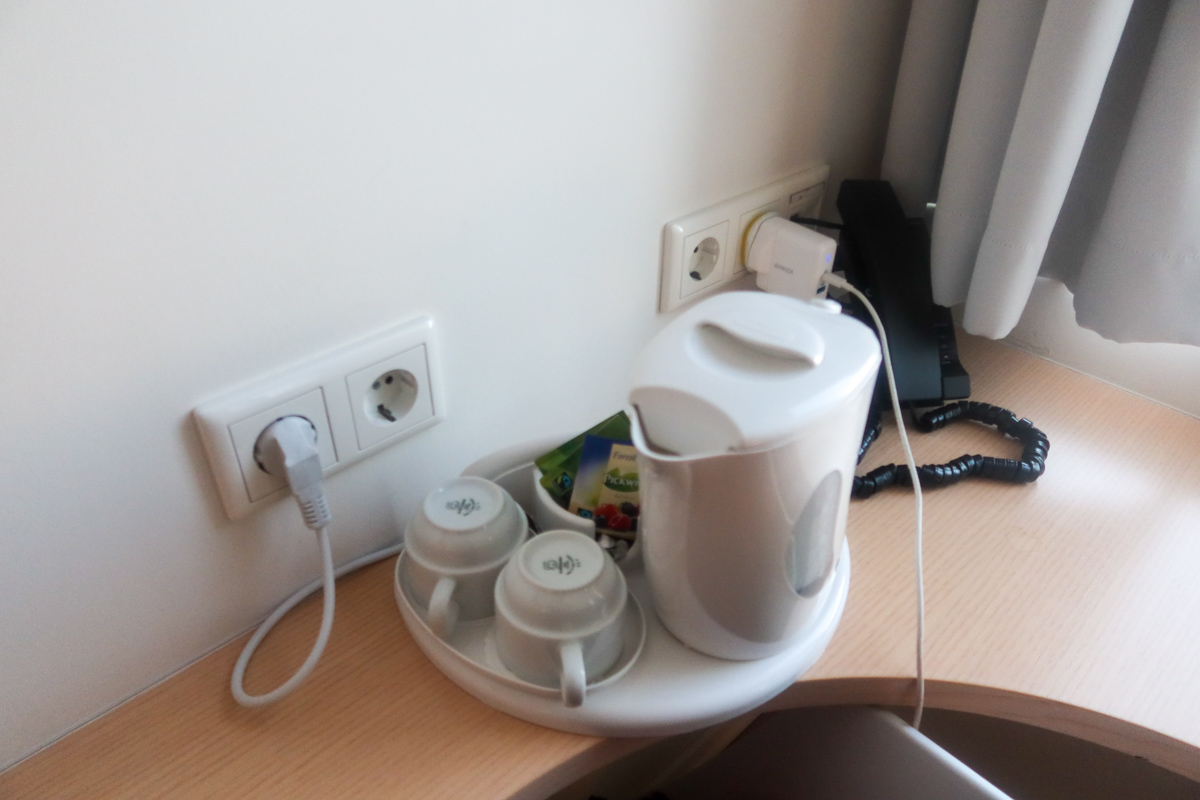
Fosshotel Reykjavík
This chic hotel is in an advantageous position right in the heart of the city center, and has modern rooms with comfy beds and swanky bathrooms.
The expansive lobby is sleek and stylish, and there’s a restaurant and gym on site.
Kex Hostel
Kex Hostel is one of the cheapest places to stay in Reykjavik, with a huge social area, restaurant and bar, and private and dorm rooms.
It’s situated just steps from the coastline and in proximity to the rest of central Reykjavik’s best attractions.
If you’re a backpacker and you’re looking for somewhere chilled out to meet other travellers, there’s nowhere better.
How to get to Reykjavik

The best way to get to Reykjavik is to fly. The small Keflavik airport connects to London, various East Coast USA airports and a few other capitals in Europe.
EasyJet are the cheapest provider that fly from London to Iceland, whereas you can get a WizzAir flight from Budapest and Polish cities.
You can also fly Iceland Air, which are a more comfortable airline with more legroom, included baggage, TV screens and complimentary soft drinks.
Ferry to Iceland from Denmark
While nearly all travellers to Iceland land in Keflavik International Airport, there is a ferry service from Denmark, which docks in the town of Seyðisfjörður in eastern Iceland and operates year-round.
This journey takes days, and it’s an eight-hour drive from here to Reykjavik, but it’s certainly more interesting than flying!
How to get to Reykjavik City Center

Reykjavik Keflavik Airport is located a 45 minute drive from the city center.
The easiest way to get from Reykjavik Keflavik Airport is to book onto the Fly Bus. You can reserve your spot by booking a ticket on Get Your Guide before you fly, or you can arrange tickets after you land.
This bus service connects the airport with the bus station in the city center and some packages include transfers from the bus station to your hotel.
How to get around Reykjavik
Reykjavik city center is quite walkable, even in the winter (the pavements can be icy, but the main city areas are gritted!).
The bus system is also fairly easy to use, and you can ask restaurants and attractions to order taxis.
How to take the bus in Reykjavik

Download the KLAPPID app, where you can log in with your phone number and buy tickets using your bank card (international cards accepted).
You’ll then have virtual tickets, which you can activate when you board the bus. They have a QR code that you can scan onto the reader which you’ll see as you embark on the bus.
I tried this a few times on my winter trip to Reykjavik, and it generally worked ok.
I did have a few problems with my phone freezing (I think because of the cold!) and not being able to log back into the app on my limited data.
Luckily, the bus driver didn’t seem too concerned about my app not working!
Taxis in Reykjavik
Taxis in Reykjavik are fairly plentiful, but they’re not cheap – one ten minute journey cost us the equivalent of about $20 USD.
We also asked the reception at our hotel for one on our last day and they said there were big delays as there was a lot of traffic, so do factor this in!
However, you can order taxis from hotels, attractions and restaurants, or hail the vehicles on the street if you see a vacant one.
Taxi drivers speak excellent English (as does pretty much everyone in Iceland) and you can pay with cash or card.
There’s no Uber, Bolt or Lyft in Reykjavik at this moment in time.
Reykjavik winter FAQs
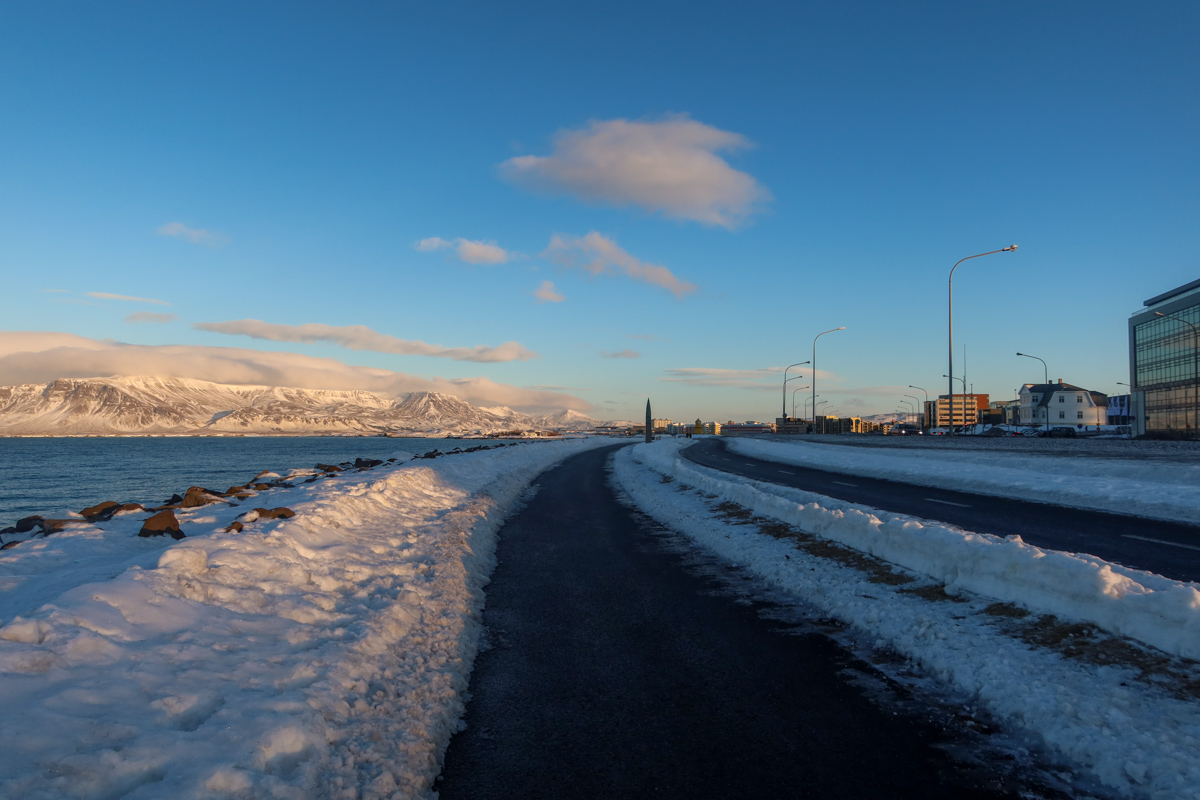
What is the coldest month in Reykjavik?
January is the coldest month in Reykjavik – which was when I was there – it got to -10°C or 14°F in the daytime when I was there, which was cold even for the capital of Iceland! The cold season lasts from November to April.
Does Reykjavik get a lot of snow?
It does snow in Reykjavik – the city had a lot of snow when I was there, and snowfall is frequent in the winter months. However, it’s never guaranteed, and it usually isn’t as thick as other places in the country due to its milder climate.
What is there to do in Reykjavik in the winter?
There’s quite a lot to do in Reykjavik in the winter – browse the museums, walk around with a hot cup of coffee, take in a view of the city from the top of Hallgrimskirkja and wrap up for a frosty walk along the coastline.
What clothes to take to Reykjavik in winter?
Pack plenty of layers! You’ll need thermal base layers, fleeces, waterproof jackets and trousers and maybe even ski clothes, along with hiking boots and two or more pairs of thick socks to keep your feet warm. However, if you’re visiting at the end of winter, it might be warmer.
How far is the Blue Lagoon to Reykjavik?
Reykjavik is about a 45 to 50 minute drive from the Blue Lagoon (around 50 km or 30 miles). You can visit on a tour or by self-driving. It’s close to the Keflavik International Airport, so many tourists visit it after landing or before departing the country.
Now you know all of the best things to do in Reykjavik in winter!

Although Reykjavik certainly has some cold temperatures in the winter time, as long as you wrap up with some warm layers you’ll have an incredible city break here.
It’s certainly a different vibe to the winter sun destinations that I mention elsewhere on this website, but if you’re looking for snow-covered landscapes, a warm and welcoming culture and unique geography, Reykjavik in winter is the perfect trip.
Reykjavik has so much on offer in winter; and while the northernmost capital in the world is dark and cold in this season, visiting it is an otherworldly experience that you won’t find in many corners of the globe. Pack plenty of layers, and you’ll have a fantastic time in the Icelandic city!

